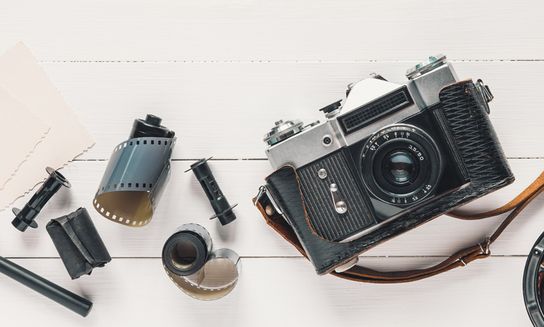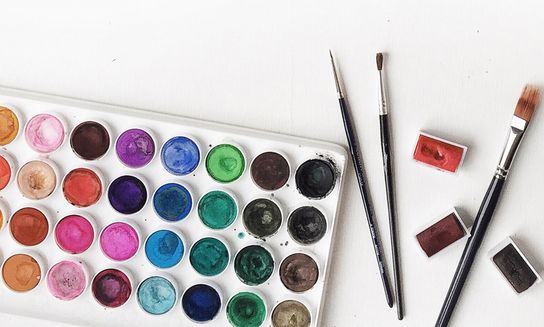For pictures and prints
Jelly, aspic or pharmaceutical capsules – this is what comes to mind when most people think of gelatine. Less well known, however, is the important role gelatine plays in making photographs and X-rays – and in art.
In the picture with gelatine
Thanks to gelatine, amateur films, colourful paper, graphic films and X-ray films can be produced on an industrial scale. Silver photography forms the basis for analogue picture development for both black-and-white films as well as X-ray films. Silver-salt photographic material is composed of film or paper with up to 15 layers of a coating that contains gelatine. In this, the gelatine acts as a binding agent for the light-sensitive silver halides.

Due to its swelling properties, the photographic essences can permeate the layers and be removed again through washing. Gelatine plays an important role in this complex substrate technology. It can form a solution when heated that sets again to a gel when cooled and is preserved after water is removed. Gelatine has the properties necessary to produce highly sensitive photographic films, especially colour and X-ray films that require an especially high degree of sensitivity.
Gelatine and X-ray film
X-ray film is a large-format black-and-white film that is usually coated on both sides to increase its sensitivity to light. The emulsion layers contain light-sensitive silver halides embedded in gelatine. The film is protected from light irradiation in a cassette along with screens that are illuminated when exposed to X-ray radiation. What becomes visible on the film depends on how much radiation is absorbed by the body of the patient positioned between the X-ray source and the film material.
Gelatine in analogue and digital photography
Gelatine is also involved in making paper prints: photographic paper is a light-sensitive, coated, paper-based material. Just as with film, the light-sensitive substances (e.g. silver halides, dye couplers) necessary for the photo development process are embedded in many layers of gelatine to protect them from mechanical damage.
Manufacturers of film materials value gelatine as a raw material that cannot be replaced by synthetically manufactured plastics or polymers. Furthermore, similar to polymers, gelatine of consistent high quality can be industrially manufactured in modern plants.
Gelatine also plays an important role in digital photography. The gelatine-coated “photo paper” used to print digital images guarantees that colours stay brilliant and forms sharp.
Gelatine in inkjet applications and art prints
Here, the gelatine coating is not used to protect light-sensitive substances. Instead, its swelling properties are used to enable the absorption of water-soluble printer ink by the paper. The ink is then sealed into the dried gelatine coating on the inkjet paper and thus protected from the damaging effects of sunlight and ozone. Inkjet colours would fade on papers without a gelatine coating.
In addition, several alternative photographic processes use gelatine as a carrier of the pigment or rather chemical layer. These processes are primarily used in art photography and graphic reproduction and result in prints of the highest quality.

Gelatine in painting and props
Albrecht Dürer, William Turner and Vassily Kandinsky could apply it as skilfully as the ancient Egyptians: the art of watercolour painting. While the artists on the Nile worked with rather rough pigments dissolved in a gum arabic solution on a chalk base, today, extremely fine pigments are mostly used that penetrate down into the paper fibres. Binding agents such as gum arabic, synthetic products or gelatine are applied to bind the pigments into a homogenous colour.
To ensure that the fine colour pigments do not penetrate too deeply into the paper and “disappear”, watercolour paper is dipped into a gelatine bath to apply a fine coating. The coating also lends a slight sheen to the paintings.
Gelatine’s diverse range of applications has been inspiring artists of all genres from time immemorial. Theatrical and cinematic productions also make use of its flexible design properties. Thus, make-up artists use dyed gelatine to create realistic wounds or fantasy figures. Organs as well, such as those seen on popular hospital or crime series, are often made exclusively of gelatine.
